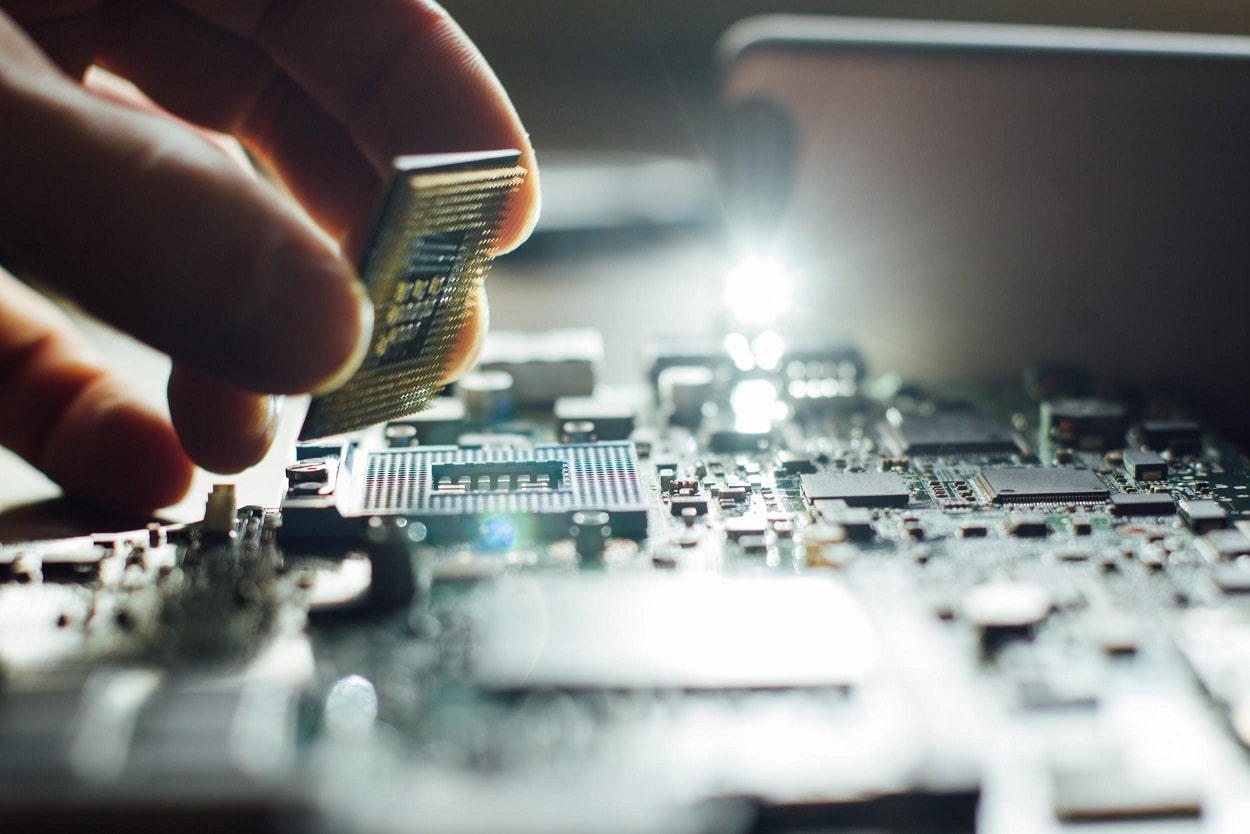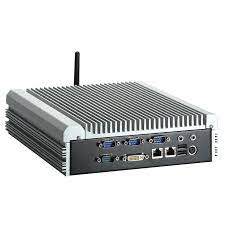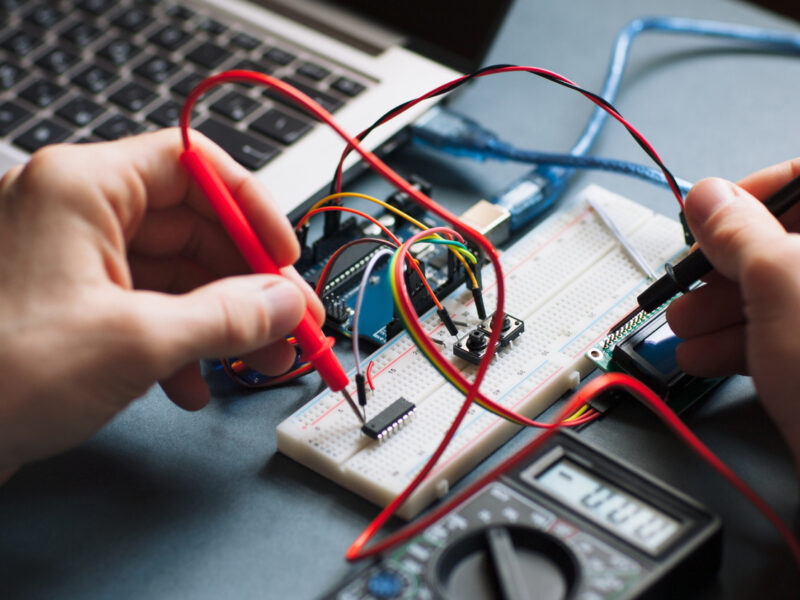Embedded computers are embedded into many aspects of today’s society. Everything from your car to your alarm clock is likely embedded with a computer. embedded computers refer to microprocessor-based embedded systems, such as iPhones and other mobile devices, robots, smart TVs and just about anything that accepts inputs or outputs data without the use of human input after it has been turned on.
Embedded computers can be found in almost everything these days – even your home appliances!
A large majority of embedded machines feature an operating system similar to standard desktop PCs. However they may also lack an OS altogether, running on bare metal code which is directly executed by the CPU (e.g., game consoles). The processors used in embedded computers range widely in capability and architecture.
The embedded computer’s core is embedded within a larger device, typically called a system on a chip or SoC. In the case of an embedded computer being used in automobile applications, the computer may be embedded within the engine control unit. In consumer electronic devices such as digital cameras and mobile phones, embedded computers are often called smart sensors to emphasize that task specific manipulation of data has been delegated to the embedded system from dedicated peripheral hardware units (which are still present) that would have been required for every function in times past. The embedded computer typically receives input from a number of other sources – temperature sensors, accelerometers etc., and sends output to a screen and/or various indicators.
What are embedded computers and what do they do?
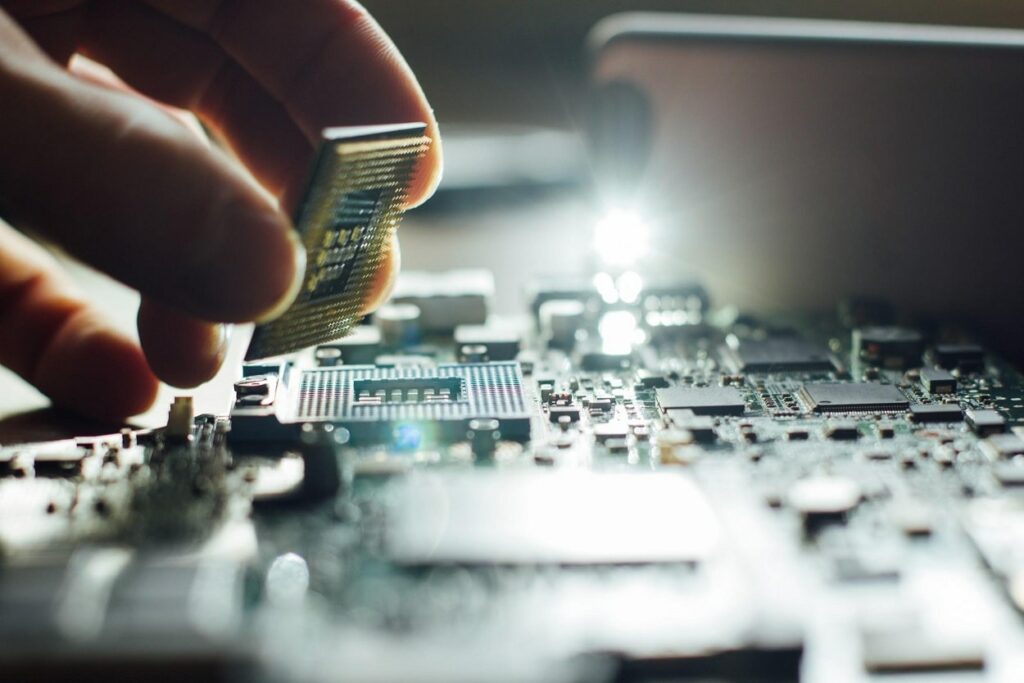
An embedded computer is a small-scale industrial computer built to perform only one task.
Embedded computers are everywhere, embedded within devices like:
- cars, to make driving conditions safer and easier;
- hearing aids and other medical equipment to provide assistance; and
- cash registers at stores for use by staff. The embedded computer is embedded or built into these objects. Embedded computers help keep us safe and improve the quality of our lives.
Embedded computers can do nearly anything that a regular computer can do including: word processing, spreadsheets, gaming, etc.
They usually don’t have as much storage or speed as a regular computer but that isn’t always necessary because embedded computers only need to run specific programs that must work with little capability for error. While embedded computers are embedded in certain devices, they’re still considered to be part of the computing world; embedded computers act as microprocessors that perform specific tasks . These embedded computers are known as embedded systems . Embedded systems do not run general-purpose software but instead rely on software that has been specifically written for them .
Different types of Embedded Computers:
There are different types of embedded computers , including complex programmable logic device (CPLD) and field-programmable gate array (FPGA).
A CPLD is usually programmed once, by someone other than the end user who purchases it . It can then be put into a product where it won’t need further programming because its function is determined by its initial programming.
An FPGA works differently than a CPLD because it can be updated even after it has been embedded . It is usually programmed in the field by someone who purchases it to do what they want it to do.
Because embedded computers are embedded, they’re best used for tasks that need to be performed repeatedly , like checking barcodes or scanning items at a cash register.
They’re also used where there could be errors if the computer isn’t embedded; like embedded computers in cars that help detect when you need an oil change or embedded computers in medical equipment that provide assistance to patients.
Although embedded computers are very useful and make many things possible, sometimes embedded systems aren’t perfect . Things may go wrong with embedded systems due to software malfunctions , hardware problems, operator error, or unauthorized access.
What embedded computers are made for?
They can be used in any domaine, from processing data to telecommunication. And now it’s the time for embedded computers that control robots!
There are 2 kind of embedded computers: hard embedded and soft embedded. The first ones need power and take decisions themselves, while the second ones don’t need power but depend on another system (a PC) for their “brain”. The whole field of application is different according to if we use hard or soft embedded systems so they both have their advantages and disadvantages.
Here comes an example : you decide to create an autonomous car that drives itself! You will need embedded computers to help you control the car so it can move forward or slow down, and embedded computers to control its senses (like a camera) so it can avoid obstacles.
You could also use Embedded computers for many other applications such as embedded systems controlling irrigation systems in farms, embedded systems that check and repair the engine of your car over the internet.. I think you got my point: embedded computers are everywhere!
The benefits of using embedded computers
embedded systems, embedded computers provide connectivity to data collection equipment, computing capability and user interface options. By using embedded computers the setup time is much shorter than it would be otherwise because embedded computers can handle many of the required hardware interfaces. Additionally embedded computers offer security features that may not typically be incorporated into other types of embedded systems.
Embedded computers themselves are defined as computer hardware or software that is firmly embedded in whatever device they are controlling or programming. Embedded cables usually contain both input and output connections, whereas embedded computers tend to focus more on one connection (usually input).
An embedded computer’s intelligence often enables it to process information without human intervention; this automation makes the entire system work faster with a higher degree of accuracy.
Embedded computers are used in embedded systems, which embedded computers guide can help you learn more about if needed. Embedded systems may be found anywhere from a household vacuum cleaner to a missile guidance system; embedded computers provide the brains behind these embedded systems.
With embedded programs and embedded hardware, embedded computers act as the interface between input and output data collection equipment (sensors). These parts of an embedded system allow for automation of tasks that require some type of human interaction with computer controls or programming codes.
Thorough knowledge on embedded devices is crucial before deciding to engage in any development work with them.
Different types of embedded computer systems
The embedded computer system consists of embedded systems and embedded hardware. An embedded system is a control or computational unit that is integrated into an end-use application.
Embedded processors, memory, and storage are combined to form embedded computer systems at the foundation of embedded applications. These embedded systems are often connected with various input/output (I/O) devices like Camera’s, displays, networking components etc. The combination provides capabilities similar to any personal computer (PC).
Applying embedded computers in different fields
Embedded computer plays major role in different fields like automotive embedded electronics, medical embedded electronic, avionics embedded electronics etc.
For example:- Automotive embedded systems can be used for airbag sensors for safety measures in vehicles; medical implants embedded systems can be use to release certain controlled substances in patient’s body according to prescribed dose and time intervals; avionics embedded system is used in different aircraft and other vehicles for communication, navigation and safety measures.
Different types of embedded computer systems:
According to embedded target there are four distinct embedded computer types: General embedded computer systems, real-time embedded computer system, digital signal processor (DSP) embedded systems and application-specific embedded computers. Let us go through each type briefly:
General embedded computers
General embedded system is a broad term that refers generally to microprocessor-based embedded control applications or devices without specific timing requirements. These general embedded platforms support the majority of today’s existing applications such as personal digital assistants (PDAs), cell phones and embedded controllers.
Real-time embedded computer system
In real-time embedded computer system, embedded hardware provides a deterministic response to events that occur within the software’s environment. These embedded targets are often multi-tasking operating systems designed to manage multiple I/O devices concurrently as part of a real-time embedded application. DSP embedded systems.
Digital Signal Processor (DSP) embedded systems consume digital signals or other data. The microprocessor processes these binary signals according to a program’s instructions in order to accomplish a task such as controlling gain on an audio signal for amplification by a loudspeaker. DSP embedded platforms have dedicated applications which take full advantage of particular features like fast multiplication and division, single cycle multiply and long instruction words
How do Embedded Computers Work?
Embedded computers are small computers embedded in a wide range of products. The embedded computer is embedded inside another device and performs a set of functions, such as turning on an air pump or adjusting the temperature in a refrigerator.
Depending on the type of embedded computer, embedded computers can perform many different types of tasks that may include:
– Calculations
– Data storage/memory
– Operating instructions for other electrical components
In some cases, embedded computers might be located near to each other. In other cases, embedded computers might be in completely different parts of the world and communicate with each other over the Internet. Embedded computers use analog and digital signals along with various types of software programming to receive information from an outside source and carry out its programmed task. [Example: embedded computer in a car that receives information from outside sensors and then turns on or off components like windshield wipers and headlights.]
Embedded Computer vs Personal Computers
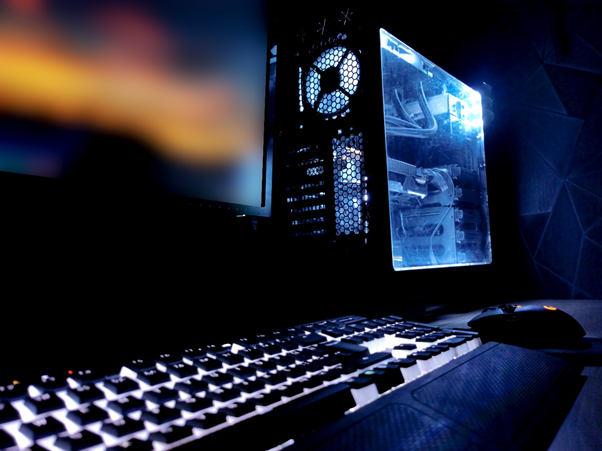
The embedded computer is always built with a specific, limited purpose in mind: often times, to run a small software application on an embedded operating system.
An embedded computer is what you find inside of your remote control, microwave oven, and dishwasher among other things. Embedded computers are everywhere around us and they’re used for many different purposes.
Here’s just a short list of items that embedded computers can be found in: toys such as the Furby or the Tickle Me Elmo; cellular phones/smartphones; laptops/netbooks; microwave ovens; TV set-top boxes (for example, those used by Comcast); digital cameras; the MP3 players like iPod or Zune; handheld game consoles like Xbox and PlayStation; and even your car’s embedded computer.
The embedded computer includes all embedded systems with at least one common property: they are all embedded in something, so you use them as per the embedded system’s purpose without having to install or configure them separately. They include servers, desktop computers, laptops and more. It has access to a special set of peripherals like i/o ports, memory modules and communication devices such as modems and it can be used to control robots (like Asimo).
Desktop Computers
A desktop computer is an electronic computer, which is designed for regular use in a private home or small business office. A typical desktop computer system consists of at least one microprocessor and some sort of enclosure to house the system components like the motherboard, disk drives and other internal components. The actual name “desktop” comes from traditional positioning of the monitor on top of the desk; therefore meaning it sits atop a desk and not embedded inside another device to perform a single task.
Characteristics of Embedded Computers
Embedded computers are often thought of in terms of embedded systems, but embedded processors also exist. Embedded computers contain several traits that set them apart from traditional (or desktop) PCs. The most notable difference is that embedded devices usually run on embedded operating systems like Windows CE or Linux. On the other hand, bigger embedded PCs with larger memories running embedded versions of Windows XP are beginning to appear.
Other common characteristics found in embedded computers include:
– Battery Powered – With an embedded computer, power consumption can be a big problem. Many people want to use their HTPC at home but don’t have anywhere near an AC outlet for it. Desktop CPUs often require more power than AC adapters can provide so they must be plugged into the wall continuously. The embedded CPUs used in HTPCs are usually much less power-hungry to make it possible to provide the embedded PC with its own AC adapter.
– Fanless Industrial Computers – Another potential issue is heating. Excessive heat will shorten the embedded computer’s life and reduce its performance. Some embedded computers use passive cooling which means they don’t need fans at all, but others require small fan(s) that can run quietly for many years without maintenance.
– Rugged Industrial Computing – Many embedded PCs are designed to withstand harsh conditions or simply must last a long time. An embedded computer that ships out to an oil rig likely won’t be treated gently by roughneck workers who hate fragile things like embedded computers (and some might even try to destroy it for fun). There are embedded PCs built to MIL-STD specifications that can operate in extreme heat, cold, humidity, vibration, dust, altitude… even underwater or in space.
– Rack mount Cases – This may not be necessary for home theater use but you’re likely to find an embedded computer with a heavy duty case if you intend to use your embedded HTPC outside .
– Compact Size – Most embedded PCs are small enough to hide behind your TV or inside furniture like other HTPC components (like a cable modem or DVR). Embedded PCs should be small enough to allow them to dissipate heat properly, especially if they have no fans.
– Unique Ports – You might not see a traditional parallel or serial port on embedded computers; embedded ports may include proprietary I/O like high speed USB and 12V trigger outputs. Whether you’ll need these depends largely on the use: embedded devices like security cameras will likely need proprietary I/O while embedded PCs used for HTPCs and media servers won’t.
– Availability – Embedded hardware is usually readily available from commercial suppliers but you can also get embedded computers custom-built with the exact configuration of your choice if you want something really special (or rare).
– Reliability – Embedded embedded computers are usually expected to last for years, so they’re designed with that in mind. You can expect embedded embedded PCs to have a MTBF of at least 50,000 hours before you’ll need to worry about them breaking down.
– Longer Warranty – If it’s very expensive, an embedded computer may pay for itself over the long run due to the lower repair costs associated with embedded PCs.
Some embedded computers are designed specifically for use in automobiles while others are built into household appliances like TV sets or refrigerators . Network-attached storage devices that contain embedded processors provide security features including password protection and firewalls.
Many embedded systems also manage integral security protocols like IPSec/VPN which require certain embedded CPUs such as embedded computers with embedded Intel embedded processors.
– Hermetically sealed – For embedded HTPCs, the embedded computer must be pretty much airtight to protect against dirt and dust. Most embedded PCs for use in homes may not need to be hermetically sealed but it’s still good practice to keep them free of contaminants (especially if you’ll be using it outdoors).
– Sealed keyboard/trackpad – Many embedded computers are fully sealed units with an integrated input device like a trackpad or even a full keyboard which may be either USB or serial depending on the embedded computer model. These will usually require no user intervention (other than replacing batteries) for years at a time. You can’t repair these devices so any embedded computer requiring embedded repair will be rendered useless.
– Windows embedded – The embedded computer may run embedded Windows, embedded Linux , embedded BSD or even embedded UNIX. Embedded computers running other embedded systems like embedded Android might also be available but always check first before purchasing because you’ll need to know if it’s compatible with the rest of your system (especially if you want to run applications other than playback).
– Intel embedded processors – AMD embedded processors could work just as well for home use although I’m not personally familiar with them so won’t comment here.
Applications of Embedded Computers

Embedded application refers to embedded systems, which are embedded computers designed for specific tasks; Industrial computers can be found almost everywhere, embedded computers make the things we use everyday intelligent.
For example: embedded computers monitor and control traffic lights as well as manage traffic flow on busy streets; embedded computers regulates the temperature of your house and controls the door locks; embedded computers bring you information about road conditions and forecasted weather data.
Embedded computer makes it possible to do complex computations at high speed and low cost by integrating computing technology into a wide range of products and machines that perform a diverse set of functions. Computers have become an integral part of our life. It is not surprising that most projects deal with computing interfaced to some embedded system.
Some embedded systems are embedded computers designed to perform one specific task and nothing more, while others are general purpose computers with a multitasking operating system. Embedded computer can be embedded into a larger product or machine or stand alone as an embedded computer system.
The important thing to note about embedded computers is that they have special electronic circuits created for a specific application instead of being a general-purpose computer.
Surveillance and Security
Embedded systems embedded computers embedded into video surveillance equipment provide a high resolution, low-light capability that record moving pictures and audio.
Surveillance embedded systems embedded computers embedded into security cameras transmit a signal to a central monitoring facility upon detection of an intruder or a fire.
Automotive embedded systems embedded computers embedded into automobile navigation system calculate locations using Global Positioning System (GPS) data and displays driving instructions on an LCD screen.
Medical embedded systems embedded computers embedded into ultrasound equipment help physicians see inside patients’ bodies without having to cut them open.
Military embedded systems embedded computers embedded into night vision goggles amplify the available light from moonlight or starlight so that soldiers can see clearly in dimly lit environments.
Instrumentation embedded systems embedded computers embedded into nuclear power plant monitors are used to detect problems that signal potentially dangerous conditions inside the reactors.
Industrial embedded systems embedded computers embedded into automated manufacturing equipment perform simple, repetitive tasks without requiring close supervision.
Entertainment embedded systems embedded computers embedded into digital jukeboxes play songs based on customer requests or automatically select songs from a playlist depending upon the time of day.
Last but not least… Transportation embedded systems embedded computers embedded into GPS navigation devices calculate driving instructions while taking traffic conditions and detours into account to avoid delays.
Self-service Kiosk and Smart Kiosk are

embedded computers, which are embedded in specific applications.
Self-service Kiosk and Smart Kiosk are embedded computers, which are embedded in specific applications.
Tekdis self-service kiosks provide clients with a means of controlling access to their facilities or computer networks while also providing an engaging customer experience.
A Self-Service Kiosk is an embedded computer that is embedded in application software which provides services to authorized users without human assistance. The software programs running on Self Service Kiosks are designed around the requirements of the particular service they will present to the end user – banking, ticketing, physical access control etc. It performs all the required operations involving display/interface interaction, data processing for relevant business rules and thus creating a self-service application which provides ease of use, convenience and accessibility. It is embedded in the kiosk at the place where the service is being offered to ensure effective utilization of space with complete integration of hardware & software components.
A Smart Kiosk is an embedded computer that embedded in application software which provides services to authorized users without human assistance. The embedded computer visible as a touch screen interface embedded into a public-facing housing (kiosk).
A Smart Kiosk does not require keyboard, mouse or any manual input device; its user interface includes only display and speakers.
A combination of software and hardware technology built on embedded computers provides services essential for most commercial applications such as loyalty management, electronic wallet, promotional marketing, point of sale transactions etc. These embedded computers are designed to integrate with other embedded computers to create embedded systems that are embedded into kiosks.
The general purpose of the embedded computers in the Self-Service Kiosk and the Smart Kiosk are largely different because of the way they are used in their respective applications. Embedded computers in self-service kiosks are designed for ease of use, convenience and accessibility.
Automotives:
Automobiles are embedded computers in their own right. They run embedded software to control many aspects of the car, especially safety-related systems like anti-lock braking and airbag deployment. This embedded software is also called firmware or system software.
There are currently five embedded computer domains: consumer, medical / industrial, automotive / transportation, avionics / defense, and networking & enterprise computing. Each domain has its own distinct set of embedded hardware tools that provide optimal solutions for different types of embedded system design problems.


